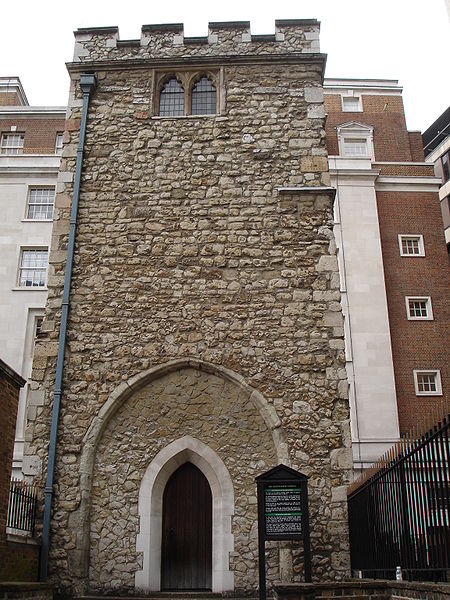All Hallows Staining
12th-century establishments in EnglandChurches in the City of London, of which only the tower remainsGrade I listed churches in the City of LondonUse British English from November 2014

All Hallows Staining was a Church of England church located at the junction of Mark Lane and Dunster Court in the north-eastern corner of Langbourn ward in the City of London, England, close to Fenchurch Street railway station. All that remains of the church is the tower, built around AD 1320 as part of the second church on the site. Use of the grounds around the church is the subject of the Allhallows Staining Church Act 2010.
Excerpt from the Wikipedia article All Hallows Staining (License: CC BY-SA 3.0, Authors, Images).All Hallows Staining
Mark Lane, City of London
Geographical coordinates (GPS) Address External links Nearby Places Show on map
Geographical coordinates (GPS)
| Latitude | Longitude |
|---|---|
| N 51.511577777778 ° | E -0.080488888888889 ° |
Address
Tower of All Hallows Staining
Mark Lane
EC3R 7AF City of London
England, United Kingdom
Open on Google Maps











